Lockheed Martin say they recently demonstrated their laser weapon system for the U.S. Air Force at a government test range at Fort Sill, Oklahoma, where the system successfully engaged and shot down multiple fixed wing and rotary drones.
The firm say that the Advanced Test High Energy Asset (ATHENA) operated in a fully-netted engagement environment with a government command and control (C2) system and radar sensor.
“The radar track was provided to airmen who operated ATHENA via cues from the C2, then ATHENA’s beam director slewed, acquired, tracked and defeated the drone with a high-energy laser. Validating this type of full kill-chain performance has been a priority of the U.S. Air Force and other branches of the Department of Defense, and it remains a requirement for laser weapons to be effective against unmanned aerial systems (UAS) on the battlefield.”
“We’ve watched in recent news this type of laser weapon solution is essential for deterring unmanned vehicle type threats, so it’s an exciting time for us to watch airmen compete Lockheed Martin’s critical technology. ATHENA has evolved to ensure integration and agility are key and it remains an affordable capability for the warfighter,” said Sarah Reeves, vice president of Missile Defense Programs for Lockheed Martin.
The ATHENA system was developed by Lockheed Martin to “provide a cost-effective, complementary anti-drone capability with the network of systems the warfighter is already using”. ATHENA was operated by USAF personnel during this demonstration, and it was able to destroy multiple drones in engagements representative of what is being encountered by U.S. armed forces today, say Lockheed.


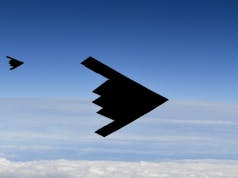
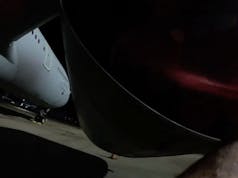

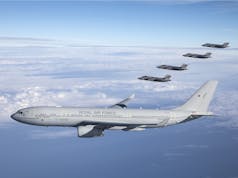

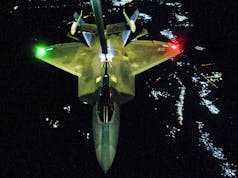

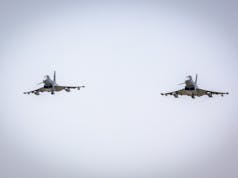

Do we have any information on the testing of Dragonfire?
I thought we had started the initial phase of this back in July at the Shoeburyness site.
if nothing else i absolutely think our laser system has the best name……. cause come on….. dragonfire…. just sounds way better than any of the american acronyms!! 😛
So very Game of Thrones and indeed far better than a Greek Goddess of handcraft.
Goddess of War too Spy, along with Ares. But honourable War, not blood lust like Ares.
Interestingly, Ares and Athena are also variants of the Ajax vehicles being delivered to the British Army. Like the earlier era Spartans and Samson, they like using ancient names.
As for Athena as a laser, the US also have an Aegis, which was the shield of Zeus, which was often lent to Athena!
So still apt.
If I was developing Dragonfire I’d put a label on the fire button that reads “Dracarys.”
I was wondering if these American systems take advantage of the Fess power system being developed for Dragonfire as it was originally from a co-effort research project and claimed to have been effective earlier in the year.
I think the majority of these lasers are combination lasers where multiple beams are added together to give variable power. I’m not sure if the US are using flywheels to store energy for their lasers, as they’re probably just using a big diesel generator as its less new tech to worry about. I’d be very surprised however, if we don’t use a combination of flywheel and super-capacitors for energy storage for a productionised Dragonfire.
davyb, do you happen to know the recharge rates for these devices? i assume they must be operating at Kw power to achieve a reasonable range.
The laser that MBDA are building for Germany is supposed to be about 100KW. They are talking about it being able to take out missile, aircraft and drones at a range of between 2 and 3Km, Which compared to what the US is boasting is I think a realistic figure, especially due to the expected weather conditions of Europe. If you’re using the laser in the clear blue skies of Texas, then the range would be significantly more. As to recharge rates, no, most companies are not releasing their figures. However, Rolls-Royce have developed a purpose built generator for lasers that fits in a half size iso container. They have said it could power a 100KW laser. I would expect it to have a lot of energy storage, but also very fast acting switching so the laser could be used in either continuous or in pulse modes.
Dragonfire was supposed to be about 50KW, but as it’s a combination laser, its power is scalable. Don’t forget MBDA are also part of the Dragonfire project, so the differences between the German laser and Dragonfire may be very small.
Thanks for a great response DaveyB, I wonder what its capabilites are against small surface vessels, such as Iranian gunboats. leave the airborne fight to AA missiles with much longer range.
Dont get excited yet.
Lasers are hugely inefficient with regards to power and cooling. You lose over 60-70% of the power needed to generate the beam in system heating effects . So a 100kw laser needs 3 or 4 times that ship supplied power to generate the beam and 3 times the cooling capacity to absorb the laser systems heating effects.
The range and power requirement info below is a little old but probably a good accurate benchmark to use.
Athena is a laser of a low couple of hundred Kw. It can take down boats and UAVs at short range only (something around 1-2 Km). Even so it will need a couple of Mw power supply and a 500 Ton Capacity cooling system ( That’s cooling capacity not physical weight!). It should fit into a couple of ISO 20 containers , less if you have the capability to use the ships chilled water system for cooling so dispensing with a container of cooling equipment.
For modern Anti Ship missiles , Hypersonic ASM’s, aircraft and ballistic missiles at a respectable range (5-20Km) you will need a 1-3 Mega Watt laser. That will need a 10-20 Mw power supply and a 1500 ton cooling capacity unit.
All of the above is assuming the laser fires 2/3 of the time during an engagement.
The USN is now fitting a Laser Dazzler to warships (DDG51) to fry optical targeting systems . The RN had a simple and basic hand directed system ( Cheavage) in the 80s. The issue with such systems is that they do certainly fry optical targeting systems but that also include the Mk 1 Eyeball used by aircraft pilots. Using a weapon designed to main and not kill goes against the Geneva Convention and was one of the reasons the RN quietly pulled Cheavage .
It was very pretty at night though! Blue green laser beam firing off into the sky.
Hasn’t stopped the Russians fitting a laser dazzler to their ships.
There is the idea of scalling up the Directed Infra-Red Counter-Measure (DIRCM) turrets that are being fitted to aircraft, on to ships. Much like Leonardo’s Mysis which is primarily used to defeat manpads, by either blinding the infra-red sensor or burning it out if its at (really) close range. Clearly this system only works on missiles with an IR sensor, but by scalling up the “laser” it could have a similar affect on multi-sensor missiles, even radar, as it could burn through the antenna and through to the guidance system.
Again you’re right regarding the amount of power required. Much like radar, where the square of four dictates power versus range (oh and frequency!), it’s the same with a laser. With a 1KW laser you can get a reflection of the Moon’s target paced there by NASA. The only problem is there is no oomph behind the beam’s spot. To enable damage to occur to a target you need a lot of energy, which is best transmitted in varying pulses which generates quite a significant heat-affected zone in the material because “the pulse duration is longer than the thermalisation time of most metals” i.e. the materiel can’t cool down quick enough not to effect its elasticity. This is so there is more power concentrated in the smallest amount of time but also in the spots surface area. Anything up to 2/3 the amount of energy can be reflected off the target. However, with the remaining 1/3, localised heating takes place, so even a perfect mirror will quickly blemish. This allows more energy to be absorbed and helps to burn through a material. This all happens in milli-seconds
As I mentioned to whlgrubber above, MBDA have quoted that the laser they’re building for Germany, which is a 100KW laser, has an effective range of between 2 and 3Km, so basically Phalanx territory. They have been talking about fitting this to a 8 wheeled truck, but they haven’t mentioned anything about power generation, cooling or its multi-shot capability. Whereas Qintiq have given hints on Dragonfire’s capability. Perhaps because it is intended to first be fitted to a ship, so the power and cooling is pretty much self-contained, thus allowing multi-shot capability.
The Russians/Soviets had Tin Man if I remember my recognition training correctly as a laser dazzler. They have moved on since then so i have no idea what the latest iteration is.
The other issue with dazzlers is that laser beams reflect off the sea and structures. It means that even if you fire a laser from your own ship at something, your own personnel on the upper deck and bridge need laser eyesight protection. As the protection is for the most part wavelength specific it doesn’t cover and protect you against other peoples lasers. In short you are going to be carrying a multitude of glasses and it will be down to good Intelligence on which ones to wear for the threat that is in your vicinity.
Pulsing is the only way to go for creating structural failure on a target. You don’t need much damage to an aerodynamic surface for it to cause issues in flight. All the other stuff like stored energy power systems and cooling tend to be forgotten about when people go “ooooh Lasers!” . Without power and cooling the system is useless.
Oh and stop mentioning radar theory and square power…..it gives me a headache and I have flash backs to sitting in a class room trying to understand it. Thats why I specialised in stuff that goes woosh and bang…its more hands on and less thinking! 🙂
No mate, you’ve been sitting in the sun too long….